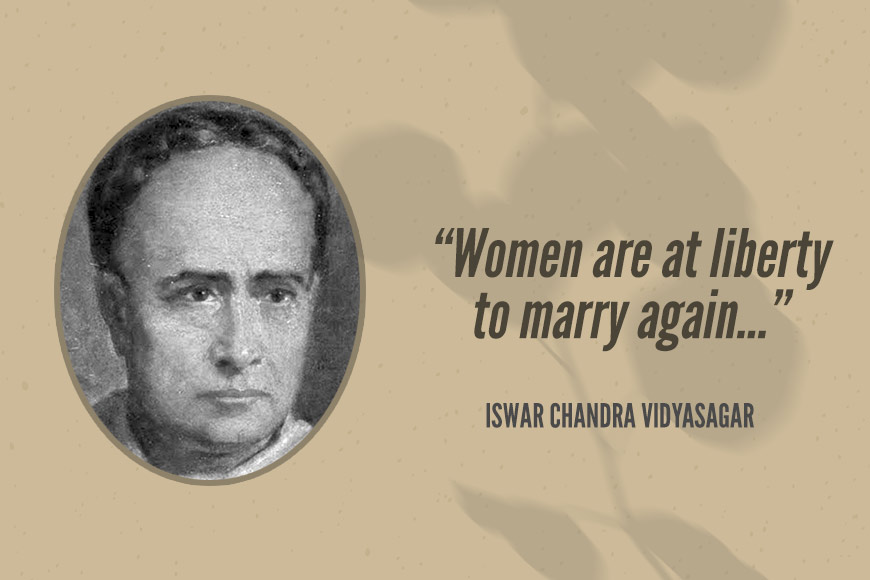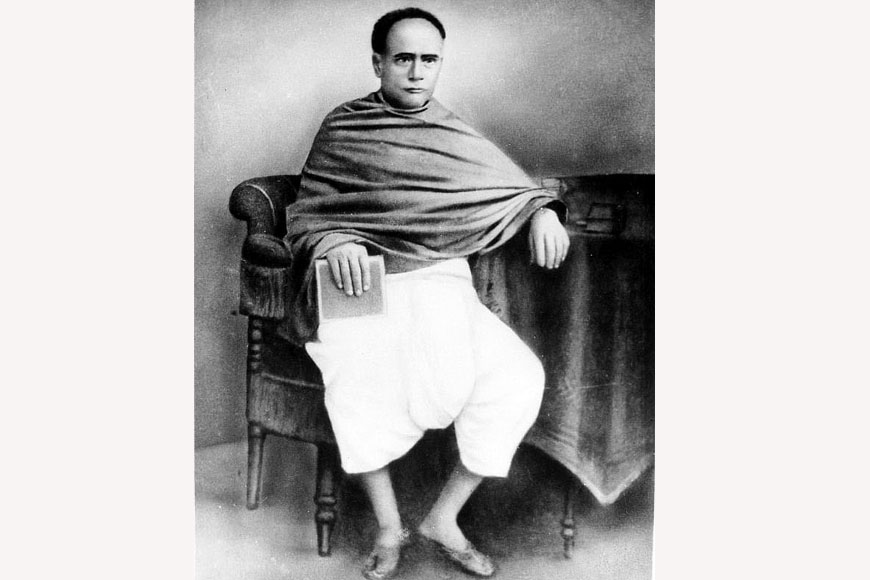Ishwarchandra Vidyasagar – the man who stood by India’s women, centuries ago

Four years ago, a well-known media house initiated a unique campaign as a global crusade to promote inclusion of women from all strata – from widows to prostitutes in the Bengali ritual of Sindoor khela during Durga Puja. The move was aimed at changing the 400-year-old Bengali Hindu ritual of Sindoor khela from one of division to that of inclusion. As per this custom, married women come together to celebrate their marital status, while others – namely single women, divorcees and widows, as well as the gay and transgender community – are forced to look on, uninvited.
But isn’t it strange that a campaign had to be launched in 2017 to sensitize the public in Bengal? Something that Ishwarchandra Vidyasagar did centuries ago. The man who defied all social norms and prevalent customs set by an orthodox Hindu society and fought for improvement in women’s status in the family and in society, particularly in Bengal. Widowhood for a majority of Hindu brides still spells disaster even in this 21st century. A large number of widows from different parts of the country were once bundled off to holy pilgrimages at Kashi (Varanasi), Mathura and Vrindavan, to spend the rest of their lives in exile in utter penury.

It was in 1854, that Vidyasagar began his campaign for widow remarriage. The 19th century was a particularly appalling time for women, especially for pre-pubescent girls from poor families, who were forced into marriages with older men. Once their husbands died, they had to spend the rest of their lives wearing white saris, give up all material comforts and live a stigmatized and isolated existence. Vidyasagar was deeply anguished to witness this unprogressive practice play out before his own eyes and decided to stamp it out.
In 1854, he began writing against the practice in Tattvabodhini Patrika, a progressive journal of the day. He quoted a shloka from the ancient Parashara Dharma Samhita, a code of laws for the Kali Yuga, which, when translated, read something like this: “Women are at liberty to marry again, if their husband be not heard of, die, return from the world, prove to be impotent or be an outcast.”
The following year, he filed a petition before the British government, seeking legislation that would allow widow remarriage. Although his campaign was supported by influential figures from the society like the Maharaja of Bardhaman, Mahtabchand Bahadur, yet a lot of backlash came from powerful conservative groups within Hindu society and key personalities such as Radhakanta Deb of Sovabazar challenged the proposal. The Bill defined as a legislation enacted to “remove all legal obstacles to the marriage of Hindu widows was passed as Act XV of 1856 on July 19, 1856.” According to Shibnath Shastri, initially the matter was limited to arguments between pundits and educated milieu. When finally, the legislation was introduced protests followed. In fact, the government received more than 30,000 signatures challenging Ishwar Chandra’s petition but Vidyasagar was unwilling to rest the matter with the enactment of a mere legislation. His decision to marry off a widow rocked the entire society.
However, his sustained efforts, alongside fellow social reformers finally resulted in the passing of the Widow Remarriage Act on 26 July 1856. Despite their success in passing a law, the real challenge was getting society to accept widow remarriage. Ishwar Chandra took the challenge and performed the first widow remarriage in Kolkata on 7 December 1856 on his own dime. The first legal remarriage was held when 10-year-old Kalimati, a widow, was married to Srischandra Vidyaratna, a colleague of Vidyasagar at Sanskrit College.
Apart from spending money on remarriages, Vidyasagar also had to pay for expenses of many poor families ostracized by the Hindu society. He contracted a debt of half-a-lakh rupees. Widow remarriages followed in Presidency Town, Hooghly and Midnapore. During this period he had to face vile taunts whenever he was in public space and also threats of assault and even murder but stood rock solid on the issue.
Vidyasagar was a legend who was far ahead of his times. He challenged the staunch Hindu patriarchy to bring in modern reforms. His scholarly liberal outlook makes him relevant to this day. Vidyasagar breathed his last on July 29, 1891 and the country lost one of its most illustrious and worthy sons.










